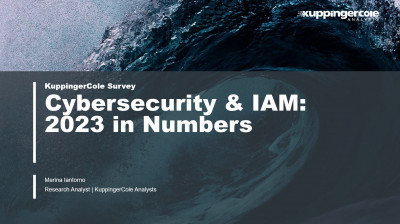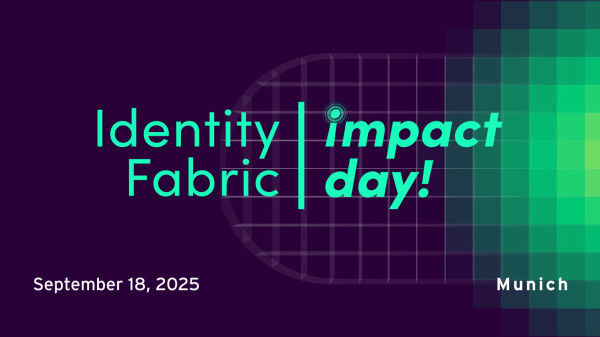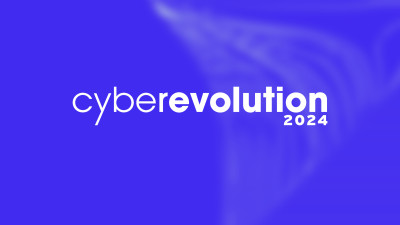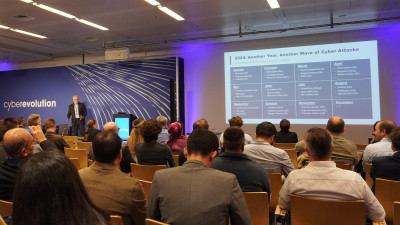Non-Human Identity Management: Tailoring IAM for AI Agents
The rise of AI agents as active participants in organizational workflows introduces unique identity and access management (IAM) challenges. Unlike human identities, AI agents often operate autonomously and may refer to sensitive data or interact with secure systems in order to achieve their assigned goals. Managing their access effectively requires a paradigm shift, as human-oriented IAM methods can leave AI agents over-provisioned and create security risks.
The paradigm shift we’re talking about is AIdentity: the crossover of IAM with AI. AI needs identities and built-to-purpose identity management. IAM also can massively benefit from AI for automation, predictive analysis, and decision-making for governance and risk assessment. To learn more about KuppingerCole’s take on AIdentity, listen to this podcast. This post’s focus is on IAM for AI agents, and the complex identity relationships that emerge when using AI bots.
What is an AI Agent?
AI agents are software entities designed to autonomously carry out tasks in pursuit of specific goals set by humans. Backed by large language models (LLMs) and connected to tools via APIs, these agents break down high-level objectives into actionable tasks. For example, an AI agent deployed in customer support might independently analyze user queries, craft responses, and escalate complex cases.
With the AI agents market projected to grow from $5.1 billion in 2024 to $47.1 billion by 2030 with a compound annual growth rate of 44.8%, their adoption is set to redefine operational workflows. Research and Markets forecasts this rapid expansion, driven by tailored AI solutions addressing specialized industry needs.
While AI agents bring transformative potential, their autonomous nature demands robust security frameworks to safeguard actions and ensure accountability.
Challenges in IAM for AI Agents
AI agents have complex identity relationships by default. Imagine the scenario where an AI agent replaces an executive assistant, which among other tasks works on behalf of an employee to make travel bookings or arrange meetings. The decisions and actions taken by that AI agent must be transparently documented as completed by the agent, not the employee. The agent must have access to the necessary data to make useful decisions (such as access to the employee’s calendar), but only for the strict time that the agent is performing its task. To have the appropriate level auditability and explainability the AI agent must have a distinct identity.
This is one of many scenarios, and a basic one at that. An AI agent that directly fills a human role that is typically well defined is easier to understand and anticipate than the cross-cutting, interdepartmental roles that AI agents can fill. Treating AI agents like human users in IAM systems leads to significant risks. Traditional identity frameworks may provision roles and permissions based on static attributes and far over-provision the agents causing risk of lateral movement in the case of a security breach.
As a place to start, consider these four concepts about AIdentity of AI agents:
- AI Agents Handle Dynamic Contexts
Tasks often span across departments. For example, an AI agent may access classified files for one task and send sensitive emails for another. Individually, these actions are permissible, but together, they could violate organizational policies.
- AI Agents Must Have Just Enough Access, not Persistent Access
More so than humans, AI agents must not have persistent access to resources because it creates vulnerabilities and increases the attack surface. However, human IAM solutions appropriated for AI Agents may use hardcoded credentials, service accounts, or API keys, which can provide continuous access to underlying resources and unnecessarily increase risk.
Rather, AI Agents should have just-in-time (JIT) and just-enough-access (JEA) provisioning. Each access request should be dynamically evaluated against policy frameworks, with ephemeral tokens replacing static credentials.
- AI Agents Must Have a Different Take on Authentication
Multifactor authentication (MFA) may give AI agents more access than they need, since MFA can include non-static credentials. For AI agents, authentication and authorization should be non-persistent and contextual. Authentication for AI agents ideally uses ephemeral credentials to secure communications between agents, APIs, and tools.
- AI Agents Require Governance and Auditability:
Beyond access control, organizations must establish clear policies for AI agent actions, ensuring they align with business rules, legal requirements, and ethical guidelines. Audit trails must document every decision for accountability and compliance.
Identity Fabric for AI Agents
The KuppingerCole Identity Fabric provides a flexible and modular approach to identity management, making it well-suited to address non-human IAM needs. By integrating capabilities like dynamic access management, policy-based authorization, and governance, Identity Fabrics enable organizations to build secure, scalable, and adaptable IAM systems for AI agents.
Learn more about how the Identity Fabric enables robust IAM for both human and non-human entities in the Identity Fabrics Leadership Compass.
Building a Secure Future
Managing AI agent identities effectively is a cornerstone of ensuring trust, accountability, and security in a rapidly digitizing world. Non-human IAM must prioritize dynamic, policy-driven approaches tailored to the unique needs of AI agents. By integrating solutions such as non-human authentication, authorization, and audit capabilities, organizations can securely harness the potential of AI agents while minimizing risks.
Explore our comprehensive resources, including the Identity Fabric 2025 vision here to see how modern IAM architectures are evolving.


















































